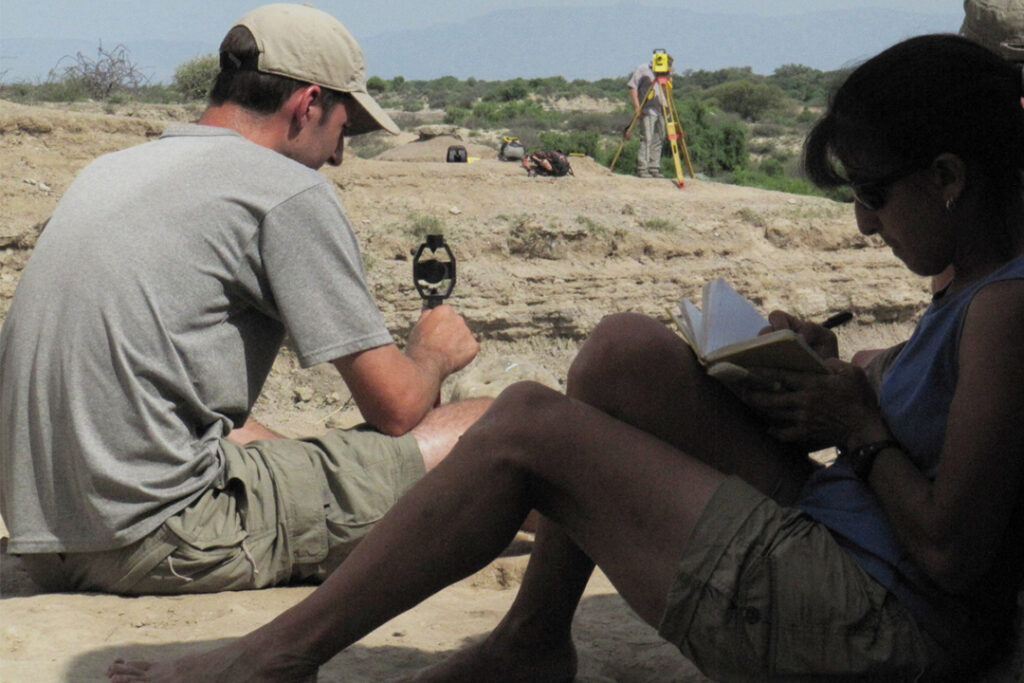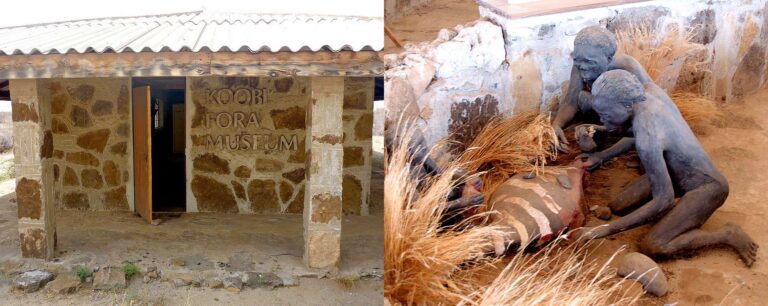- Scientists have uncovered rare fossilized footprints in northern Kenya, revealing that Paranthropus boisei and Homo erectus shared the same landscape 1.5 million years ago
- The tracks, preserved in muddy lakeshore sediments, offer new insights into the interaction between these early human species
- This discovery sheds light on their distinct walking patterns and raises questions about how they may have competed or coexisted in the wild
A groundbreaking discovery in northern Kenya has revealed that two ancient human species, Paranthropus boisei and Homo erectus, coexisted and shared the same landscape about 1.5 million years ago.

Researchers found fossilized footprints at Koobi Fora, near Lake Turkana, which provide the first direct evidence of these species crossing paths.
The footprints, preserved in muddy lakeshore sediments, show Paranthropus boisei with a distinctive, flat-footed gait, and Homo erectus with a more modern, human-like stride.
This discovery raises important questions about the interaction between these two species.
Did they compete for resources, or did they peacefully coexist? Researchers suggest that their dietary differences—Paranthropus boisei consuming tough plant material and Homo erectus being more omnivorous—may have reduced competition.
Follow our Facebook page for more updates:
The tracks, which were likely left within hours of each other, indicate the possibility that these species even saw one another without interacting directly.
The footprints also shed light on the anatomy and locomotion of these ancient humans. While Homo erectus exhibited a walking gait resembling modern humans, Paranthropus boisei had a more ape-like foot structure with a mobile big toe.
These differences help scientists better understand the evolution of bipedalism in the human lineage.
See Also:
1: National Museums of Kenya, Scientists to Launch Fresh Hunt For Dedan Kimathi’s Unmarked Grave
2: Sombre Mood As Tiktokers Attending Brian Chira’s Burial Arrangements Break Down In Tears
Paleoanthropologist Kevin Hatala, who led the study, explained that the findings provide a “clear picture” of life 1.5 million years ago, showcasing a shared environment that both species may have depended on despite the presence of dangerous wildlife.
The study, published in Science, highlights the complex relationship between early human ancestors and offers valuable insights into the evolutionary history of hominins.
Follow our Facebook page for more updates:
Newly discovered fossil footprints in northern Kenya show that Paranthropus boisei and Homo erectus walked the same shores 1.5 million years ago.
The tracks, preserved in the mud near Lake Turkana, provide rare evidence that these two early human species coexisted and may have shared resources in a landscape filled with wildlife.

